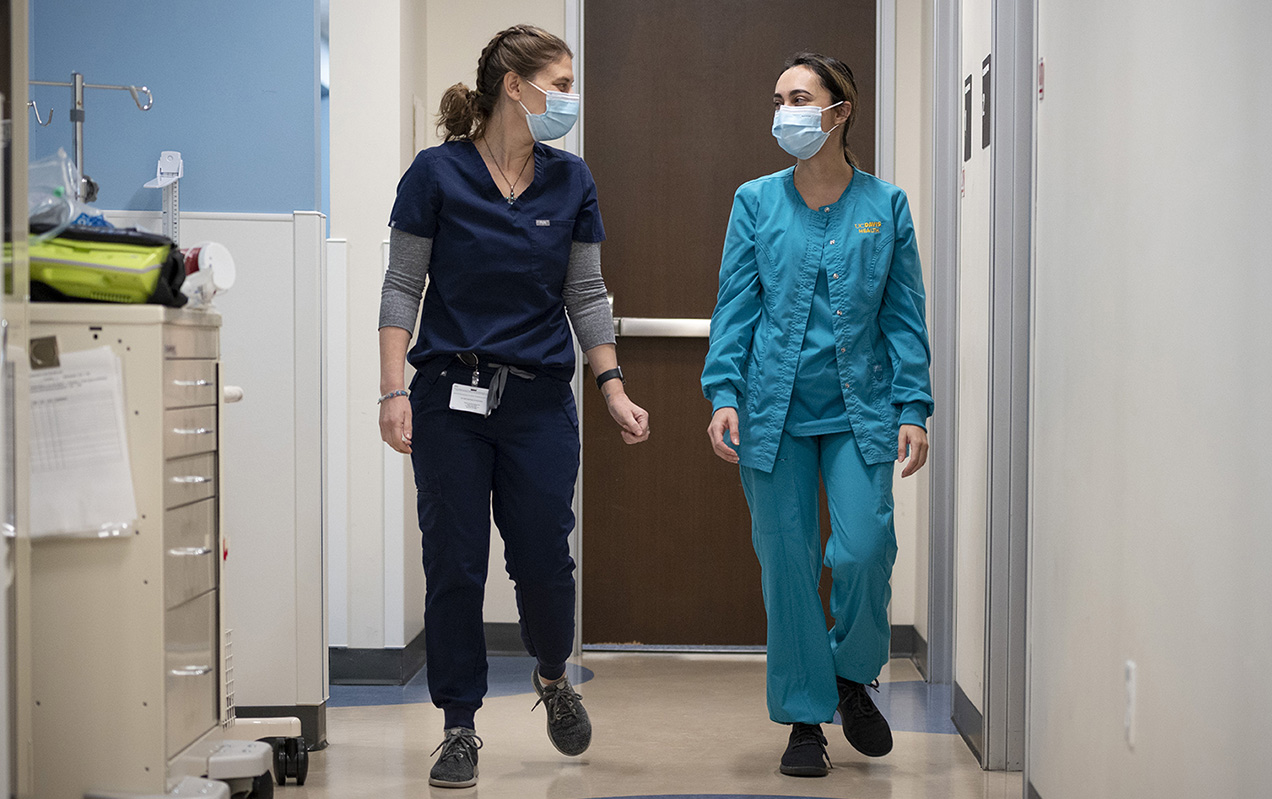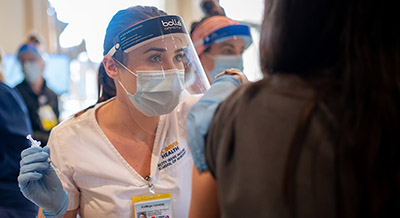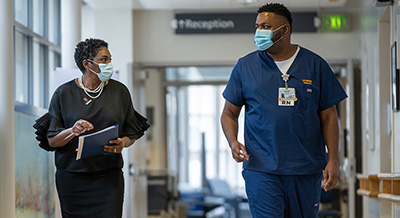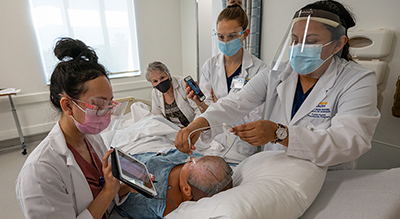Learning how to provide health care for underserved populations requires future clinicians experience working with patients such as prisoners with HIV, migrant workers with diabetes and older adults with little access to specialty care.
Students at the Betty Irene Moore School of Nursing at UC Davis care for a variety of people long before they are in practice thanks to mentors and clinics in underserved areas of California.
From rural, community-based clinics to the statewide California Correctional Health Care Services, future physician assistant (P.A.) and family nurse practitioner (FNP) students, along with nurse practitioner residents, encounter a myriad of settings for their supervised clinical rotations.
The more than 250 health care providers throughout California, who serve as preceptors to teach, support and coach these future providers, are essential partners in their education.
“The diverse clinical settings in which our preceptors’ practice make up the wonderful clinical experiences available to our students,” explains David Grega, an assistant professor in the school’s P.A. and FNP programs. He works closely with preceptors to plan clinical rotations. “This includes many urban, suburban and rural, medically underserved facilities, which are invaluable to our program for the rich, quality patient encounters that help develop competency in patient-centered care and health-related social needs.”
Preceptors say the volunteer work provides their facilities with multiple benefits as well. Whether a small clinic or large system, many preceptors agree the partnership provides exposure to different clinical practices and patient populations. It also opens doors to future providers who might one day join their teams.
“We started our Education Partnerships Program (EPP) about three years ago after we began partnering with UC Davis,” explains Jenny Espinoza-Marcus, an internist with California Correctional Health Care Services (CCHCS) and chief of EPP. “We wanted to grow awareness of the prison population and its unique needs. Previously, the prison system was inaccessible, a real black box for students and providers.”
Prisons serve historically underserved and high-risk populations. Yet research shows that correctional facilities can be public health partners in reducing health disparities.
As chief physician and lead preceptor, Eddy Joelson plans the rotations, providers, orientations and more for students at CCHCS. He says most students don’t know what to expect with prison medicine.
“I try to assign the students to subspecialties to give them exposures they may never see in other rotations,” Joelson says. “Wound care, Hepatitis C care, HIV care and telemedicine. There’s a lot of work with our equipment and interfaces they might not see in private practice.”
Mandi Battles, a P.A. and medical director for Redwoods Rural Health Center in Redway, California, says she sees similar benefits for the students who complete rotations at her clinic in rural Humboldt County.
“Students here experience a continuity of care they don’t see in other community clinics,” she explains. “There’s not a lot of specialty access here. It’s definitely rural medicine. So they may see the same patient two or three times during their time here.”
Just two years ago, a UC Davis P.A. graduate returned to practice in Humboldt, which Battles says is always a goal.
“It’s hard to get people here, keep here, as providers,” she says. “But when students come for rotations, sometimes they fall in love with it.”
Preceptors are also essential to the development of new providers. Deb Bakerjian, who leads the school’s nurse practitioner (N.P.) residency program, says preceptors enhance the primary care workforce in underserved communities.
“Preceptors in many ways are the life-blood of health professions education. Without preceptors, the ability to have a well-educated and competent workforce would come to a stop,” Bakerjian explains. “I can’t say enough about how much we depend upon and how grateful we are for their willingness to serve in this role.”
Beyond meeting the critical need for new providers, many preceptors find the role personally rewarding.
“I think about the preceptors who stick out for me were the ones who empowered me,” Battles says. “Those preceptors gave me a little more freedom and pushed me to see patients on my own. These are the ones I looked up to.”






